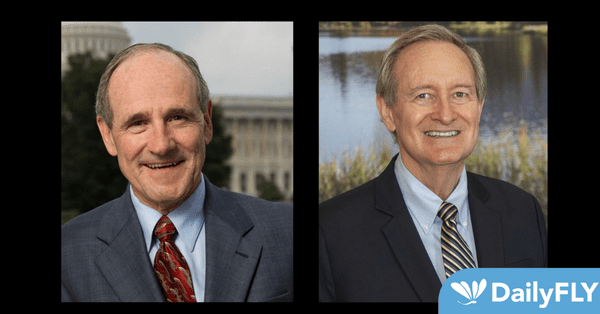OLYMPIA, WA – Washington’s innovative paid family and medical leave program could be hundreds of millions of dollars in the red within a few years, unless the Legislature acts.
This could mean reduced benefits or increased payments by the employers and employees who fund the program, which lets Washingtonians take paid time off work for serious health issues or to care for a family member or a new child.
The program’s actuary says paid family and medical leave could face a more than $350 million deficit in 2029.
The state sets a premium rate annually for how much employers and employees need to pay into the program. This year, 0.92% of Washington workers’ paychecks go toward it. Next year, that’s projected to increase to 1.13%, though the rate will be finalized at the end of this month.
The problem is that state law caps premiums for the paid leave program at 1.2%. The state is projected to reach that cap in 2027 and stay there. That plateau means the program likely won’t be able to keep up with rising claims for benefits and increased payments as wages grow.
The program has been steadily growing since its launch in 2020. From July 1, 2024, to June 30, over 320,000 applications were submitted for paid leave, up 15% from the previous year, according to a report this month. Over 240,000 Washingtonians received more than $2 billion in total benefits, a year-over-year increase of about $300 million.
And legislation approved this year extending job protections for those who use this paid leave is likely to encourage even more people to use it.
“This plan is too popular not to be better funded,” said Sen. Steve Conway, D-Tacoma.
The program already has periodic deficits as it falls behind in paying out claims before receiving premium payments each quarter. But the problem a few years down the road would be a sustained deficit, resulting in not enough money to dole out benefits, without legislators backfilling funding.
In 2023, faced with a program already more popular than expected, lawmakers infused $200 million from the general fund into the paid leave account. The money provided a cushion and allowed the state to temporarily lower its premium rate.
Another funding boost like this is unlikely anytime soon as the state grapples with deep budget challenges.
Officials are also frustrated about how the rate for premiums has to be set each year under state law. The current formula looks backward, using the past as its main baseline for calculating future needs. Late last year, an audit found this contributed to the program’s potential long-term insolvency.
The Employment Security Department prefers an “actuarial approach” that is more forward-looking. States with similar initiatives take this approach to setting tax rates, and this is akin to how contributions are calculated for Washington’s workers’ compensation system. Last year’s audit recommended shifting to this method.
A bill in the Legislature looked to make this change this year. Senate Bill 5292, spearheaded by Conway, passed the state Senate nearly unanimously before stalling in the House.
Changing the approach to calculating premiums wouldn’t secure the program’s financial future. The 1.2% cap on premiums would remain.
After Conway’s bill passed the Senate, lawmakers in the state House tried to shoehorn in an increase to the premium rate to 2% by 2033 in an attempt to address the looming deficit. The legislation died in the House, likely due to that change, Conway said. But the measure can be revived in the next legislative session, beginning in January.
Sen. Curtis King, R-Yakima, opposes raising the cap on premiums. It’s asking a lot of workers while the state is also now taxing wages to fund Washington’s long-term care program, which started collections in 2023, said King, the top Republican on the Senate Labor and Commerce Committee. He added that this affects lower-income workers more.
He instead would like to see the conversation focus on cutting back the number of weeks of paid leave people are eligible for, or restricting the events that qualify for eligibility.
“We got to start looking at, well, just how generous is this program?” King said. “How much of this can we afford to do, and how much are people really willing to pay into a program that a lot of them will never use?”
Another idea floated has been raising what is called the “taxable wage base,” Conway said. Workers only pay taxes to support the program on earnings up to this amount, currently $176,100.
This story first appeared on Washington State Standard.





